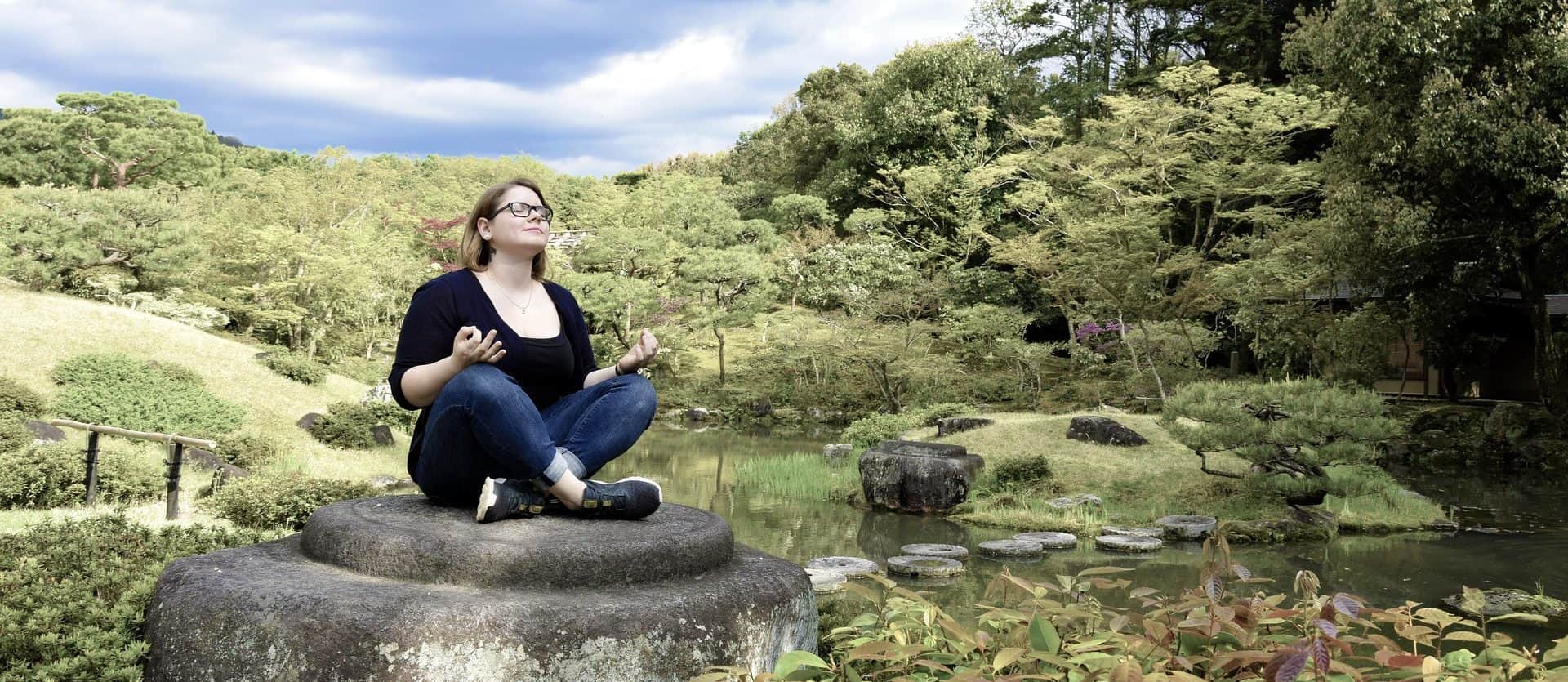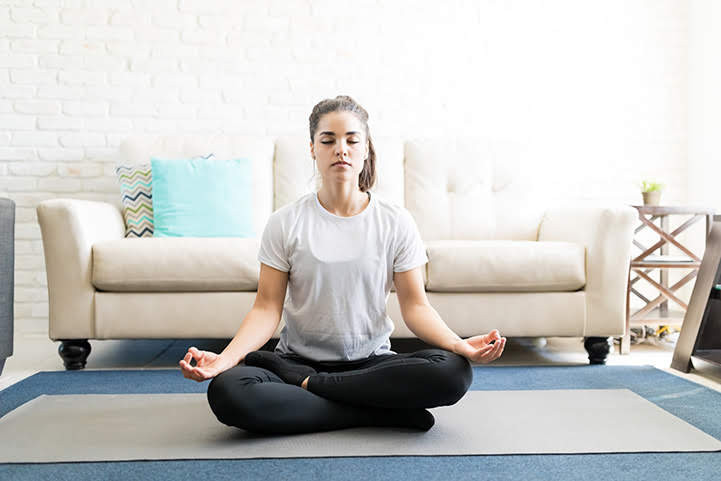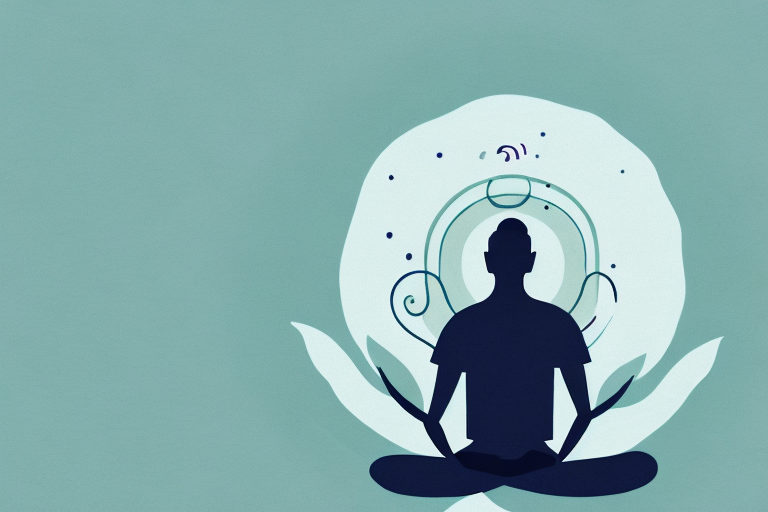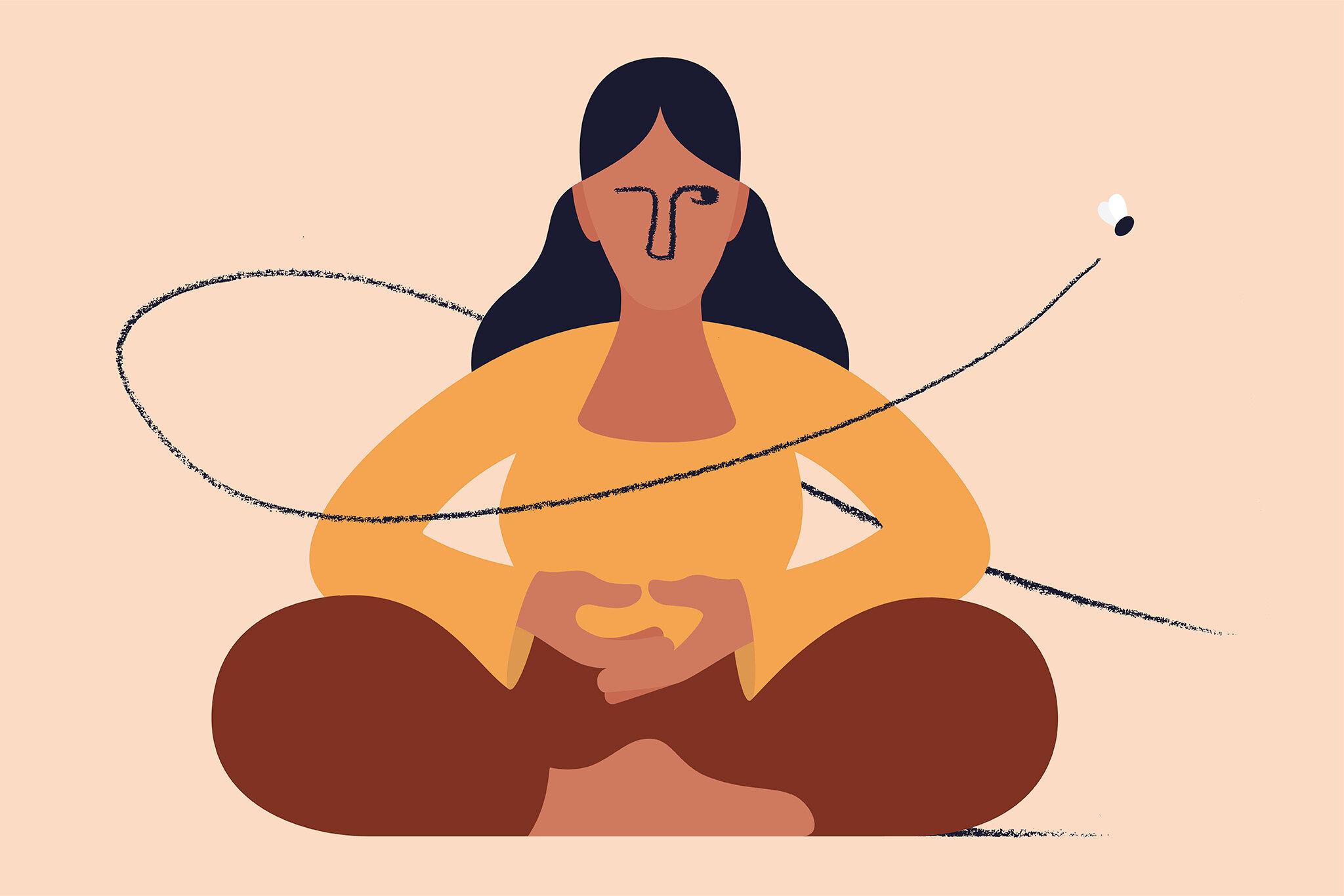
Meditation has long been celebrated as a path to inner peace, clarity, and heightened self-awareness. In a world that often feels chaotic and overwhelming, the practice of meditation offers a sanctuary for the mind. But where does one begin on this journey of self-discovery? What is the first rule of meditation, and how can it be a guiding light on this transformative path?
In this comprehensive guide, we will explore the fundamental principles of meditation, the essential first rule, and the profound benefits that await those who embark on this journey towards inner harmony.
Understanding Meditation
Before we delve into the first rule, let's first understand what meditation is. At its core, meditation is a mental practice that involves focusing one's attention and eliminating the constant chatter of the mind.
This practice can take many forms, including mindfulness meditation, loving-kindness meditation, transcendental meditation, and more. The aim of meditation is to cultivate a state of mental clarity, relaxation, and heightened awareness.
The First Rule Of Meditation - Just Meditate
In the world of meditation, the first rule can be distilled into a simple and powerful mantra: "Just Meditate."While it may seem like a straightforward concept, its significance cannot be overstated.
This rule embodies the essence of meditation, emphasizing the importance of consistent practice over mere theoretical understanding. Let's explore why "Just Meditate" is the fundamental rule to live by on your meditation journey.
The Essence Of Experience
Meditation is, at its core, an experiential practice. The true benefits of meditation do not arise from reading about it, discussing it, or even understanding the intricate details of various meditation techniques. Instead, they emerge from the act of meditation itself. In other words, meditation is something you must do rather than something you can solely think or learn about.
Beyond Theory
Many individuals embark on their meditation journey with a thirst for knowledge, seeking to understand the philosophy, history, and science behind this ancient practice. While these aspects certainly add depth to one's understanding, they should not overshadow the central role of practical experience.
Trusting The Practice
The concept of "Trusting the Practice of Meditation" is pivotal here. Trusting the practice means having faith in the transformative power of meditation and its ability to bring about positive change in your life. This trust is built through consistent and dedicated practice.
The Benefits Of Consistency
- Cultivating Mindfulness:Consistent meditation builds mindfulness, which is the ability to stay fully present in the moment. This heightened awareness can lead to better decision-making, improved concentration, and a deeper connection to your surroundings.
- Reducing Stress:Regular meditation has been proven to reduce stress and anxiety. By training your mind to focus on the present rather than dwelling on the past or worrying about the future, you can find relief from the pressures of daily life.
- Enhancing Self-Awareness:Through consistent meditation, you gain a greater understanding of your thoughts, emotions, and reactions. This self-awareness can lead to personal growth and emotional intelligence.
- Embracing Emotional Balance:Meditation equips you with tools to manage your emotions effectively. Instead of being overwhelmed by negative feelings, you learn to observe and respond to them with equanimity.
- Improving Well-Being:Meditation has been linked to improved overall well-being. It can help you find a sense of peace, purpose, and contentment in your life.
The Actionable Approach
So, how do you adhere to the first rule of meditation - "Just Meditate"? Here's a practical approach:
- Start Small:If you're new to meditation, begin with short sessions. Five to ten minutes of daily meditation is a great starting point. Gradually increase the duration as you become more comfortable.
- Create a Ritual:Establish a meditation routine by choosing a specific time and place for your practice. This ritual can help signal to your mind that it's time to meditate.
- Stay Patient:Understand that meditation is a journey, and progress may be gradual. Don't be discouraged by fleeting thoughts or restlessness during your sessions.
- Seek Guidance:Consider using meditation apps or joining a meditation group to receive guidance and support. These resources can offer structure and encouragement as you develop your practice.
Exploring Meditation Techniques
One of the beautiful aspects of meditation is its incredible diversity. There is no one-size-fits-all approach to this practice, and that's where the freedom to explore different meditation techniques comes into play. The second rule, which complements the first, encourages you to "Try Different Techniques." Here's why this rule is essential and how it can enrich your meditation journey:
The Way You Meditate Matters Less
The beauty of meditation is that the way you do it matters less than you might think. The heart of the practice lies not in the specific technique you choose but in the act of meditation itself. This realization liberates you from the pressure of finding the "perfect" technique and encourages you to simply engage in the practice.
Embracing Variety
Perhaps one day you decide to try a different meditation technique, and the next day you opt for a simple mindfulness exercise, focusing on the natural flow of your breath. The key is to embrace this variety. By experimenting with different techniques, you gain exposure to diverse approaches and philosophies, expanding your understanding of meditation.
The Learning Journey
Each time you engage in meditation, you embark on a learning journey. It's an opportunity to exercise your mental muscles—focus, concentration, and mental discipline. Over time, you develop the ability to observe the thoughts, emotions, and sensations that arise during your meditation sessions.
Discovering The Nature Of Your Mind
This is where the magic of meditation happens. By trying to meditate, you gain a profound insight into the nature of your mind. You come face-to-face with the transient, chaotic, and often uncontrollable character of your thoughts. This raw encounter serves as a valuable mirror reflecting the inner workings of your consciousness.
You Are Not Your Thoughts
One of the most transformative realizations in meditation is that you are not your thoughts. As you take a step back from the constant stream of mental chatter, you begin to identify more closely with your witness consciousness—the part of you that observes thoughts without judgment.
Gaining Perspective And Objectivity
By shifting your identification from the thought-stream to the witness consciousness, you gain perspective and objectivity. This newfound perspective extends beyond your meditation sessions and seeps into your daily life. You become more adept at observing your thoughts without becoming entangled in them.
Benefits Beyond Meditation
The rewards of this shift in perspective extend far beyond the time you spend in meditation. You become better equipped to navigate life's challenges with a sense of calm and clarity. You develop emotional resilience, enhanced self-awareness, and the ability to respond to situations with equanimity.
Demystifying Meditation - It's Simpler Than You Think
Is meditation as simple as it sounds? The resounding answer is YES. Meditation for beginners doesn't have to be complicated or intimidating. In fact, it can be a gentle, gracious, and accessible practice that anyone can embrace. Let's delve into why meditation is more straightforward than it may seem and how to approach it with confidence.
The Perceived Complexity Of Meditation
For many beginners, the idea of meditation, with its promise of stillness and inner peace, can paradoxically sound challenging. The concept of merely being, doing nothing, and not allowing the mind to wander to the endless "to do" lists can appear daunting. The expectation of meditation being an easy and relaxing endeavor often contrasts with the actual experience.
Overcoming Initial Hurdles
Many individuals, including myself, initially harbored fears and reservations about meditation. Common concerns include worries about using the correct technique, sitting properly, concentrating enough, or even breathing correctly. The fear of not choosing the right mantra, meditating at the wrong time, or failing to match someone else's meditation experience can be overwhelming. It's easy to convince ourselves that we're "doing it wrong," leading to uncertainty and anxiety.
The Information Overload
The abundance of information on meditation available on the internet, in classes, and within spiritual texts can exacerbate the feelings of overwhelm. With as many meditation techniques as there are meditation teachers, finding a starting point can be a daunting task. Some techniques are straightforward, while others are intricately complex. The sheer variety can make it challenging to determine where to begin.
Simplifying Meditation
Let's strip away the layers of complexity and keep meditation as simple as it truly is. Here's how you can approach meditation with ease:
Embrace Imperfection
Understand that there is no "right" or "wrong" way to meditate. Meditation is a personal journey, and your experience may vary from day to day. Accept that distractions and wandering thoughts are natural parts of the process. The key is not to eliminate them but to gently bring your focus back to your chosen point of attention, whether it's your breath, a mantra, or a guided visualization.
Start Small
Begin with short meditation sessions. Even just a few minutes of daily practice can yield benefits. Gradually extend the duration as you become more comfortable with the practice. There's no need to set unrealistic goals; consistency is more important than length.
Choose Your Approach
Explore different meditation techniques, but don't feel compelled to master them all. Start with one that resonates with you, whether it's mindfulness meditation, loving-kindness meditation, or a mantra-based practice. Experiment until you find a technique that feels natural and enjoyable.
Seek Guidance Sparingly
While guidance from experienced practitioners and teachers can be valuable, avoid the temptation to overconsume advice and information. Trust your intuition and allow your meditation practice to evolve naturally. Overloading on instruction can lead to confusion and self-doubt.
Patience And Persistence
Remember that meditation is a lifelong journey, and progress may be gradual. Be patient with yourself and persistent in your practice. The true beauty of meditation unfolds over time as you develop greater self-awareness, inner peace, and resilience.
The Rewards Of Consistent Meditation
The first rule of meditation, consistency, unlocks a treasure trove of rewards that extend far beyond the meditation cushion. Here are some of the profound benefits you can expect:
- Reduced Stress:Consistent meditation has been scientifically proven to reduce stress and anxiety. It helps activate the relaxation response, calming the nervous system. This reduction in stress can lead to a more peaceful and balanced life.
- Improved Focus:Meditation enhances your ability to concentrate and stay present, which can lead to increased productivity and better decision-making. With a sharpened focus, you can navigate your tasks and goals with greater clarity and efficiency.
- Enhanced Self-Awareness:As you consistently meditate, you become more attuned to your thoughts, emotions, and reactions. This heightened self-awareness can lead to personal growth and transformation. You'll gain insights into your patterns of thinking and behavior, empowering you to make positive changes.
- Emotional Balance:Meditation equips you with tools to manage your emotions effectively. It helps you respond to life's challenges with equanimity rather than reacting impulsively. By cultivating emotional balance, you can maintain composure even in challenging situations.
- Greater Compassion:Many forms of meditation, such as loving-kindness meditation, promote feelings of compassion and empathy toward yourself and others. Through consistent practice, you can nurture a more compassionate and understanding attitude, fostering deeper connections and kindness in your relationships.
People Also Ask
What Is The Golden Rule Of Meditation?
The golden rule of meditation, often considered the most fundamental principle, is "just meditate". This is based on consistency, in meditation means establishing a regular practice, ideally daily. The benefits of meditation emerge from the act of meditation itself, and they deepen with consistent practice. By making meditation a habit, you create a foundation for inner peace, enhanced self-awareness, and emotional well-being.
What Are The 5 Stages Of Meditation?
While there are various models and approaches to meditation, a commonly referenced framework for understanding the stages of meditation is often associated with Dhyana, which is the seventh limb of the Eight Limbs of Yoga as outlined by Patanjali in his Yoga Sutras. These five stages are:
a. Dharana (Concentration):This is the initial stage where the meditator focuses on a single point of attention, such as the breath, a mantra, or a visual object, to still the mind and reduce distractions.
b. Dhyana (Meditation):In this stage, concentration deepens, and the meditator becomes fully absorbed in the chosen point of focus. Distractions diminish, and there is a sense of unity between the meditator and the object of meditation.
c. Samadhi (Union):Samadhi is a state of deep absorption and unity. The meditator transcends the sense of self and experiences profound oneness with the object of meditation or with universal consciousness. It's a state of bliss, clarity, and liberation.
These stages represent a progression from initial concentration to deep absorption and ultimately to a state of profound spiritual realization. They serve as a guide for those on a contemplative journey.
How Do I Start Meditating For The First Time?
Beginning meditation can be a simple and enriching process. Here's a step-by-step guide to get you started:
a. Choose a Comfortable Space:Find a quiet and comfortable space where you won't be disturbed. It could be a corner of your room, a peaceful garden, or any place where you feel at ease.
b. Select a Posture:You can meditate in a seated position on a chair or cushion, or you can lie down if you prefer. The key is to maintain an upright but relaxed posture to stay attentive.
c. Set a Time:Decide on a duration for your meditation session. If you're a beginner, start with 5-10 minutes and gradually extend the time as you become more comfortable.
d. Choose a Point of Focus:Select a point of focus for your meditation. This could be your breath, a mantra (a word or phrase you repeat), a candle flame, or even a guided meditation.
e. Relax and Breathe:Close your eyes (if comfortable) and take a few deep breaths to relax. Then, shift your attention to your chosen point of focus.
f. Be Mindful:As you meditate, be aware of your thoughts and sensations without judgment. When your mind wanders, gently bring your focus back to your chosen point of attention.
g. End Mindfully:When your meditation time is up, gradually bring your awareness back to your surroundings. Take a few deep breaths, open your eyes, and transition back to your daily activities mindfully.
Conclusion
The first rule of meditation, consistency, serves as a guiding light on your journey toward inner peace and self-discovery. By making meditation a daily habit, you create a foundation upon which you can build a life of clarity, resilience, and emotional well-being. As you continue your practice, you'll unlock the transformative power of meditation, experiencing its profound benefits in all aspects of your life. So, start today, and let consistency be your compass on this remarkable voyage within.



